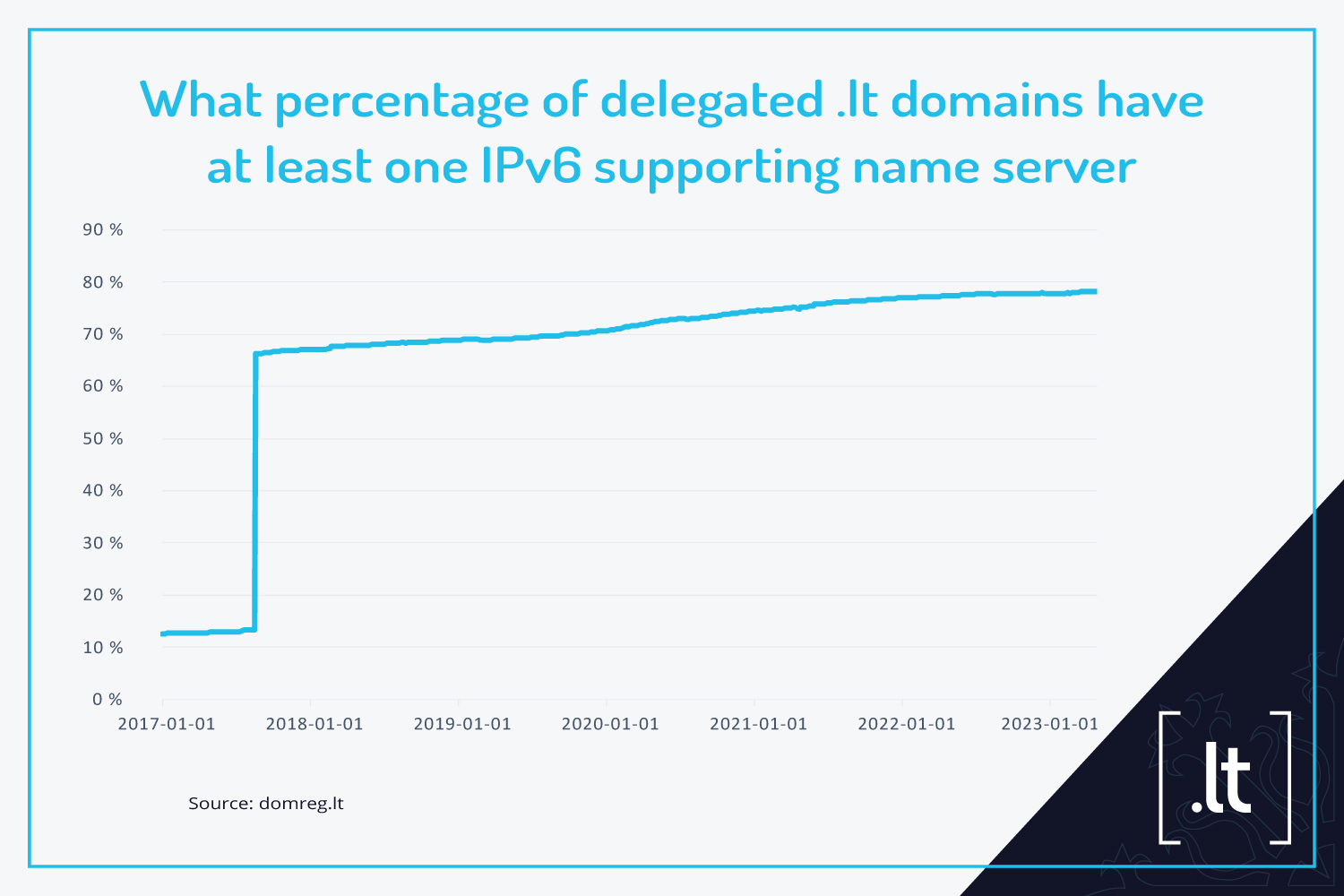Name servers alone are not enough
To use IPv6 protocol, the entire network has to be adapted, from the server that hosts the website’s files and databases to the internet service provider’s network, the DNS root and recursive servers, and the web browser on the user’s computer or telephone.
“Most likely, the user’s computer with a web browser does not resolve the domain name directly but uses the internet service provider’s recursive DNS servers. If the user is only using the IPv6 protocol, the recursive DNS servers must also be accessible via IPv6 protocol.
Further on, the users have to ask whether the servers for websites and email and other services also support IPv6 protocol,” – points out T. Simonaitis.
Most Lithuanian websites are inaccessible via IPv6 protocol
As indicated by the analysis of the DNS records of registered .lt domain name servers, only 11.14% of delegated .lt domains have a server address supporting IPv6 (a DNS record of an AAAA type).
“I think that registrars are probably not very interested, because using IPv6 protocol in addition to IPv4 protocol requires higher costs, both in terms of server administration and security insurance. There is twice as much work, the costs are rising, and so far, there is no need for the IPv6 protocol or a significant problem of a shortage of IPv4 addresses in the European region. Europe still has enough IP addresses of version IPv4 which are shared among local internet registrars. The IPv4 shortage is probably a more acute problem for rapidly developing countries that failed to get IPv4 addresses on time when they were still available,” – explains T. Mackus, Head of KTU Internet Service Centre DOMREG.
Email servers also do not support IPv6
Another very important service, email, is also not provided via IPv6 protocol. Only 11.45% of the second-level .lt domains have an email server supporting IPv6 (a DNS record of an MX type).
“At the moment, it is still a little too bold to have a website or email servers that can only be accessed via IPv6: it is likely that a very large number of people will not be able to connect to such a website or send an email at all, so for the time being, we need websites and email servers that are accessible via both protocols.
Those using only IPv6 addresses are often forced to use NAT64 and similar solutions to access servers that do not use IPv6 addresses.
The idea was to use these technologies for a transitional period, but that transitional period has become longer than anticipated. 15 years ago, it was said that everyone would migrate to IPv6. Now, I do not see any acceleration in the use of IPv6. It is used by those who have it, but I cannot say that we could already stop using IPv4”, – summarises T. Simonaitis, Head of the Technical Administration Office at KTU Internet Service Centre DOMREG.
Lithuania has a sufficient number of IPv4 addresses
According to the data of the Network Coordination Centre RIPE, Lithuanian internet service providers (local internet registrars) manage 2.6 million IPv4 addresses. There is almost one IPv4 address per person in Lithuania. The statistics for IPv4 addresses per capita are very similar in Latvia and Estonia.
In terms of IPv6 usage, according to RIPE, Lithuania is ahead of its nearest neighbours Latvia and Poland. Lithuania has around 28% of its networks published via IPv6 protocol, Latvia has 20% and Poland has 16%. Germany is a leader in the Baltic Sea Region with 57% of its networks published via IPv6 protocol. Sweden has 52%, Finland 46%, Denmark 42% and Estonia 40% of its networks accessible via IPv6.





